What’s Up
To think that I almost decided not to go down to the lake on Monday morning … But then I thought, “The Ospreys have been active lately and the young in one nest are just about ready for their first flight.” So I went. Wow, what a morning. There were Osprey’s flying around with fish and playing tag right at the base of the pier. Several landed right on the ground in front of me. Then I saw one land on the tall perch that Anita North and I erected more than a year ago. “I’d better check to see if it has a fish, preferably with the head still on.” So I drove the 150 yards and held the hammer down a lot more than I usually do. I was ready to head home to get some work done at about 8:00am but spotted a handsome Turkey Vulture on the ground eating a fish. A fish that had been dropped from an Osprey nest on a utility pole right next to the vulture. I stayed another 20 minutes moving my Sequioa often while working with a variety of focal lengths (840mm and 500mm) and varying my framing. Silly tame hungry birds often allow you to do that.
When the dust cleared, I was left with 53 keepers, most of the birds on the perch with the bream (say “brim.”). In addition, I learned a ton about Nikon AF and creating sharp images with the 600 VR and the TC-E14. (It’s about time don’t you think?) See below for that info. And best of all, I had a ton of exciting fun.
I am almost finished working on the Middle of Florida Photographic Site Guide that I am co-writing with Joe Przybyla. And I enjoyed an easy 50-length swim in the late afternoon. It is 6:34am right now on Tuesday, May 21. I am headed for breakfast and then down to the lake. I will finish this blog post when I get back. 🙂 Pleasure before business!
This Just In
It is 8:51am and I am back to work on this blog post. The lake was not as good as yesterday for flight and action but will still pretty darned good. I had an Osprey (on the perch seen in Image #2) and when I saw movement to my left, I noticed another Osprey perched much closer on a short pech that Anita and I had also put up. I’ve had Osprey on that perch before but never for more than one second. This one let me drive around with impunity for more than an hour … Downloading now. It was a 458-image morning!
This Just Out
Me. I finished this blog post just before 9:45am. It took more than three hours in all to prepare. Be sure to put your thinking cap on and take a crack at the high level underwing detail question below.
Huge Late-registration Instructional Photo-Tour Discounts Made Public
I an effort to fill a very few remaining slots, I am offering a $3,000 late registration discount on the UK Puffins, Gannets, and Red Kite IPT (one slot) and a $4,000 late registration discount on the Galapagos Photo Cruise of a lifetime (one or two slots) — the world’s very best Galapagos photo trip. We do the three world-class landings twice each: North Seymour, Hood, and Tower … Join us. Click here and scroll down for the trip details. Please e-mail with questions.
BIRDS AS ART
BIRDS AS ART is registered in the U.S. Patent and Trademark Office.
Money Saving Reminder
If you need a hot photo item that is out of stock at B&H, would enjoy free overnight shipping, and would like a $50 discount on your first purchase, click here to order and enter the coupon code BIRDSASART at checkout. If you are looking to strike a deal on Canon or Nikon gear (including the big telephotos) or on a multiple item order, contact Steve Elkins via e-mail or on his cell at (479) 381-2592 (Eastern time) and be sure to mention your BIRDSASART coupon code and use it for your online order. Steve currently has several D850s in stock along with a Nikon 600mm f/4 VR. He is taking pre-orders for the new Nikon 500 P and the Nikon Z6 mirrorless camera body.
Gear Questions and Advice
Too many folks attending BAA IPTs and dozens of photographers whom I see in the field and on BPN, are–out of ignorance–using the wrong gear especially when it comes to tripods and more especially, tripod heads… Please know that I am always glad to answer your gear questions via e-mail. Those questions might deal with systems, camera bodies, accessories, and/or lens choices and decisions.
|
|
|
This image was created on the morning of Monday, May 21 down by the lake near my home. Working while seated in the front seat of my SUV, I used the Induro GIT 304L/FlexShooter Pro-mounted Nikon AF-S NIKKOR 600mm f/4E FL ED VR lens, the Nikon AF-S Teleconverter TC-14E III, and the mega mega-pixel Nikon D850 DSLR. ISO 800. Matrix metering at about +2/3 stop: 1/2000 sec. at f/7.1 in Manual mode was perfect with the histogram pushed all the way to the right. AUTO1 WB at 7:17am on a clear, sunny morning. Nikon Focus Peaking fine-tune value: a very significant +9. See the Nikon AF Fine-tune e-Guide here. Center Group (grp) Continuous (C in Nikon/AI Servo with Canon) AF was active at the moment of exposure. The array was centered on the base of the bird’s near-wing, right on the same plane as the bird’s eye. Image #1: Osprey in flat flightClick on the image to enjoy a larger version. |
FlexShooter Pro Flight from the Car
I have tried without success for more than three decades to shoot flight from a vehicle with a long lens. I tried every trick and special mounts without success. Shooting flight off the BLUBB is impossible. Even when I got the Wimberley or the Mongoose M3.6 on the tripod in the vehicle flight was a no-go. With the FlexShooter Pro it is emminently do-able. See Image 1 above. From the driver’s seat after leveling the head.
FlexShooter Pro Update
For incomprehensible reasons, our shipment is being delayed by US Customs despite the fact that I paid the duties and taxes oniline over the weekend. It is likely that it will be here fairly soon …
We’ve now sold seven of the 20 FlexShooter Pro heads that we will be receiving when our next shipment arrives. Folks are encouraged to place their orders asap by phone: 863-692-0906. Your card will not be charged until your head ships. Once folks have a chance to play with a friend’s FlexShooter Pro or run across me in the field with my 600 VR, I expect sales to boom. Think that I am full of it? Do you remember when everyone used Gitzo tripods? Today, all that you see in the world of nature photography are Induro tripods. Folks always gravitate to gear that is better, well made, more efficient, and less expensive …
I do have one barely used FlexShooter Pro head, the one with the very slightly smaller knob (11/16″ vs 7/8″) for sale. If I had not mentioned the difference in the size of the knobs, nobody would have noticed. In any case, if you would like to save $50, I’d be glad to sell it for $549.00. Phone orders only: 1-863-692-0906 Saturday or Sunday afternoon or any weekday. I will be sharing the info on the BigFeet here soon.
|
|
|
This image was also created on the morning of Monday, May 21 down by the lake near my home. Again, working while seated in the front seat of my SUV, I used the Induro GIT 304L/FlexShooter Pro-mounted Nikon AF-S NIKKOR 600mm f/4E FL ED VR lens, the Nikon AF-S Teleconverter TC-14E III, and the mega mega-pixel Nikon D850 DSLR. ISO 800. Matrix metering at about +2/3 stop: 1/2000 sec. at f/8 in Manual mode was perfect with the histogram pushed all the way to the right. AUTO1 WB at 7:23am on a clear, sunny morning. Nikon Focus Peaking fine-tune value: a very significant +9. See the Nikon AF Fine-tune e-Guide here. Center Dynamic. 9 points (d-9) Continuous (C in Nikon/AI Servo with Canon) AF was active at the moment of exposure. The selected point was squarely on the bird’s right eye (as originally framed). Image #2: Osprey with bream (possibly Bluegill?)Click on the image to enjoy a larger version. |
Bluebill Bingo!
As I got into position, I took a guess at the exposure. It was a very good guess — plus one full stop off the sky, +2/3 stop at framed. I wound up creating about 300 images of this bird. This, the very first one, was my favorite by far. Bingo!
High Level Underwing Detail Question
Which image has the more pleasing underwing detail, Image #1 or Image #2? More importantly, why? There is a very clear answer here.
|
|
This is an unsharpened tight crop of image #2: Oprey with bream (?)
|
Nikon TC-E14 Sharpness Progress
As regular readers well know, I have been having problems with image sharpness when using the TC-E14 with my 600mm f/4 VR. A while back I thought that the problem was with my main 1.4X teleconverter. More recently, I have been creating some inexplicably soft images. Doing some thinking I realized that pretty much all of them were created using Group (grp) AF. I sitll love Group for flight — see Image #1, but I may have been way off base in using at for static subjects. Group has done well for me at close range when I am stopped down a bit — can you say Sandhill Crane head portrait? But problems have persisted when photographing more distant subjects like the Osprey on the perch in Image #2.
Last week at Gatorland I made sharp images when I switched from Group to Single Point AF. More recently, down by the lake, I began working with Dynamaic, 9 points (d-9) AF. The results have been excellent. The large crop of Image #2 immediately above is quite sharp to my eye. This morning I even took a few flights shots using d-9 and a quick peek revealed all sharp images …
Note also that in addition to getting away from Group AF, I have also been stopping down a bit from my usual f/6.3, going at times as narrow as f/10. With Canon I was able to make sharp images with my TCs (even the 2X TCs!) at slow shutter speeds with wide open apertures. As it is looking right now, it seems that Nikon TCs with f/4 lenses produce much sharper images when stopped down about a stop than they do wide open or at f/6.3. I will continue to experiement with the smaller apertures (as I did during this morning’s excellent photo session).
|
|
Images and card design copyright: Arthur Morris/BIRDS AS ART. All of the images on this card were created on the 2018 UK Puffins and Gannets IPT |
The New, Expanded 2019 UK Puffins and Gannets IPT. Seahouses, Bempton Cliffs, and the Dunbar, Scotland Gannet boat to Bass Rock! Thursday June 27 (from EDI) through Tuesday, July 9, 2019 (on the ground; fly home on Wednesday July 10.): $9,999. Limit 5 photographers/Openings: 1
Please e-mail to learn about the very large late-registration discount
Join me in the UK in late June and early July 2019 to photograph Atlantic Puffin, Common Murre, Razorbill, Shag, and Northern Gannet, Red Kite, and more both in flight and at close range. We will also have great chances with Arctic and Sandwich Terns, both with chicks of all sizes; Black-headed, Lesser-Black-backed, and Herring Gulls, many of those chasing puffins with fish; Black-legged Kittiwake with chicks; plus Grey Seal. There will be tons of great flight photography. As on all IPTs, if you pay attention, you will learn a ton, especially about sky conditions and the relationship between light angle and wind direction and their effects on flight photography.
Why go all the way to Machias Seal Island off the coast of Maine, endure a two-hour boat ride, and have to photograph Atlantic Puffins from a cramped blind usually in bright sun (and well off sun angle) when you can hop a red-eye flight from Newark, NJ and be in Edinburgh, Scotland early the next morning. First we drive down to Bridlington for easy access to Bempton Cliffs where our primary targets will be Northern Gannet in flight. We will also get to photograph Razorbill, Northern Fulmar, Herring Gull, and Black-legged Kittiwake. While in Bridlington we will spend one afternoon visiting a Red Kite feeding station that should provide lots of flight photography action.
While in Bridlington we will staying at the White Horse Inn in Cranswick, about twenty minutes from Bempton Cliffs. After 3 1/2 days of photography there, we drive down to Seahouses in Northumberland to the two lodges that will be our home base for a week. After a short boat ride each day we will have hundreds of puffins posing at close range all day, every day — usually in ideal cloudy-bright conditions. While we are in Seahouses we will do six puffin/seabird trips, all weather permitting of course; last year we did not miss a single landing. In five years we have averaged losing less than one half day per year to bad weather. We land at Staple Island in the mornings and then sail over to Inner Farnes for our afternoon sessions. In addition, we may enjoy a session or two photographing nesting Black-legged Kittiwakes at eye level from a rocky beach in Seahouses.
In Seahouses, we stay 7 nights in gorgeous, modern, upscale lodges with Wi-fi. They are beyond lovely with large living areas and lots of open space for the informal image sharing and Photoshop sessions. The bedrooms are decent-sized. Each lodge has one double bedroom and two twin bedrooms. (See the single supplement info below.) At the lodges we cook our own breakfasts each morning and prepare our own lunches to be brought on the six puffin boat trips. For dinners we will alternate cooking in the lodges with fine dining at several excellent local restaurants. We stay two nights at the Marston’s Inn in Dunbar. We will enjoy a fine-dining Thank You dinner at the Dunbar Hotel on the Tuesday evening before we fly home.
On the morning of Monday, July 8, 2019, the plan is to sleep late, pack, and head up to Dunbar Harbor, Scotland for lunch and an afternoon gannet boat chumming trip: flight photography until you cannot lift your camera. The next morning, Tuesday July 9, we will enjoy our second gannet boat chumming trip (both weather permitting). On both trips we will enjoy great views of the huge gannetry at Bass Rock. Included will be two nights lodging at the Pine Martin by Marston’s Inn in Dunbar. Very early on the morning of Wednesday, July 10, we will drive up to Edinburgh Airport so that everyone can make their flights home. No moaning please. You will need a flight that leaves at 8:30am or later. Not too much later is generally best.
|
|
Images and card design copyright: Arthur Morris/BIRDS AS ART. All images were created on the 2017 UK Puffins and Gannets IPT |
The Details
This IPT is all-inclusive except for your airfare and alcoholic beverages. All ground transportation, lodging costs, meals, your National Trust membership, and all boat, entry, and landing fees are included. Weather permitting, we will enjoy three and one-half days (at least six sessions in all) at Bempton Cliffs, an afternoon with the Red Kites, six full days on the puffin boats, one amazing afternoon gannet chumming trip, and one spectacular morning gannet chumming trip.
IPT Details
If you are good to go sharing a room–couples of course are more than welcome, heck, we actually need two couples — please send your non-refundable $2,000/person deposit check now to save a spot. Please be sure to check your schedule carefully before committing to the trip and see the travel insurance info below. Your balance will be due on February 28, 2019. Please make your check out to “Arthur Morris” and send it to Arthur Morris/BIRDS AS ART, PO Box 7245, Indian Lake Estates, FL, 33855.
Please shoot me an e-mail if you are good to go or if you have any questions.
Travel Insurance
Travel insurance for big international trips is highly recommended as we never know what life has in store for us. I strongly recommend that you purchase quality insurance. Travel Insurance Services offers a variety of plans and options. Included with the Elite Option or available as an upgrade to the Basic & Plus Options you can also purchase Cancel for Any Reason Coverage that expands the list of reasons for your canceling to include things such as sudden work or family obligation and even a simple change of mind. My family and I use and depend on the great policies offered by TIS whenever we travel. You can learn more here: Travel Insurance Services. Do note that many plans require that you purchase your travel insurance within 14 days of our cashing your deposit check or running your credit card. Whenever purchasing travel insurance, be sure to read the fine print carefully even when dealing with reputable firms like TSI.
I truly hope that you can join me on this exciting venture.
If In Doubt …
If in doubt about using the BAA B&H affiliate link correctly, you can always start your search by clicking here. Please note that the tracking is invisible. Web orders only. Please, however, remember to shoot me your receipt via e-mail.




Please Remember to use my Affiliate Links and to Visit the New BAA Online Store 🙂
To show your appreciation for my continuing efforts here, we ask, as always, that you get in the habit of using my B&H affiliate links on the right side of the blog for all of your photo and electronics purchases. Please check the availability of all photographic accessories in the New BIRDS AS ART Online Store, especially the Mongoose M3.6 tripod head, Wimberley lens plates, Delkin flash cards and accessories, and LensCoat stuff.
As always, we sell only what I have used, have tested, and can depend on. We will not sell you junk. We know what you need to make creating great images easy and fun. And please remember that I am always glad to answer your gear questions via e-mail.
I would of course appreciate your using our B&H affiliate links for all of your major gear, video, and electronic purchases. For the photographic stuff mentioned in the paragraph above, and for everything else in the new store, we, meaning BAA, would of course greatly appreciate your business. Here is a huge thank you to the many who have been using our links on a regular basis and those who will be visiting the New BIRDS AS ART Online Store as well.
Be sure to like and follow BAA on Facebook by clicking on the logo link upper right.
Typos
In all blog posts and Bulletins, feel free to e-mail or to leave a comment regarding any typos or errors. Just be right :).


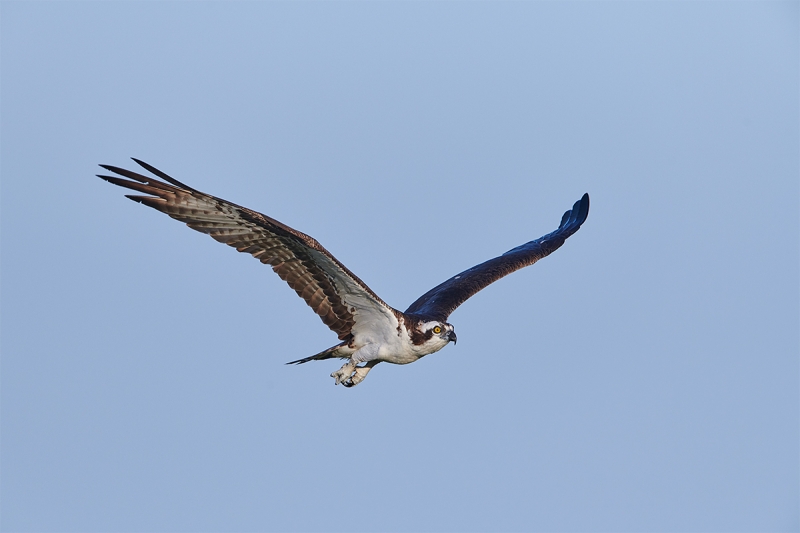
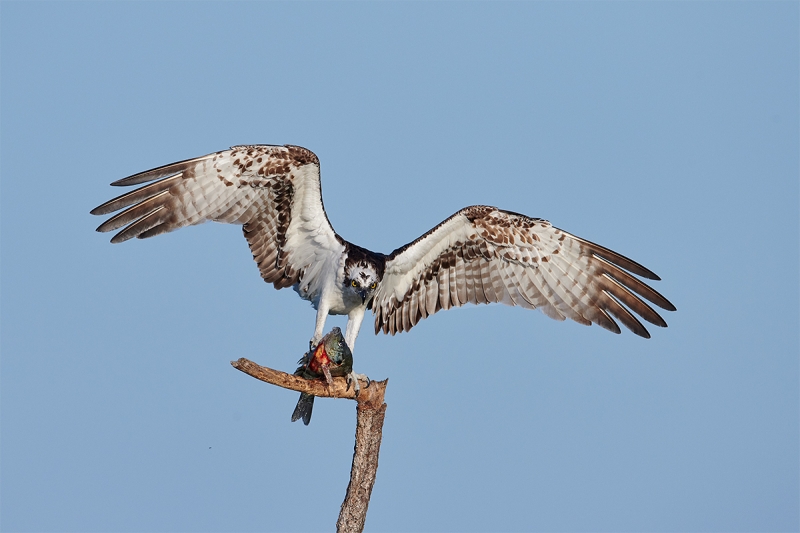
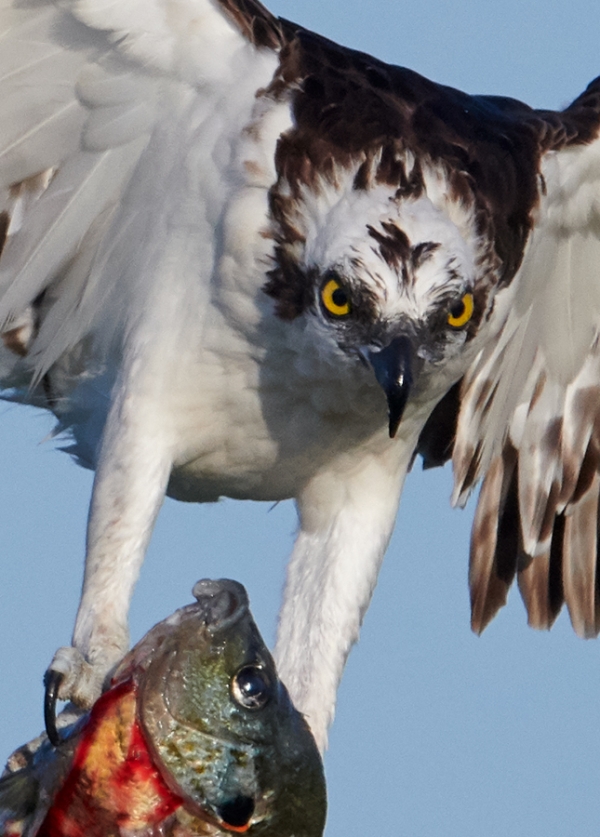
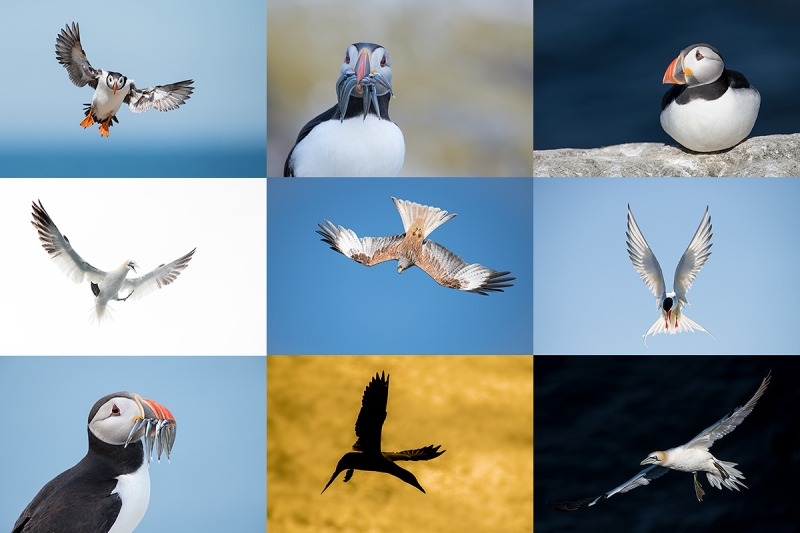
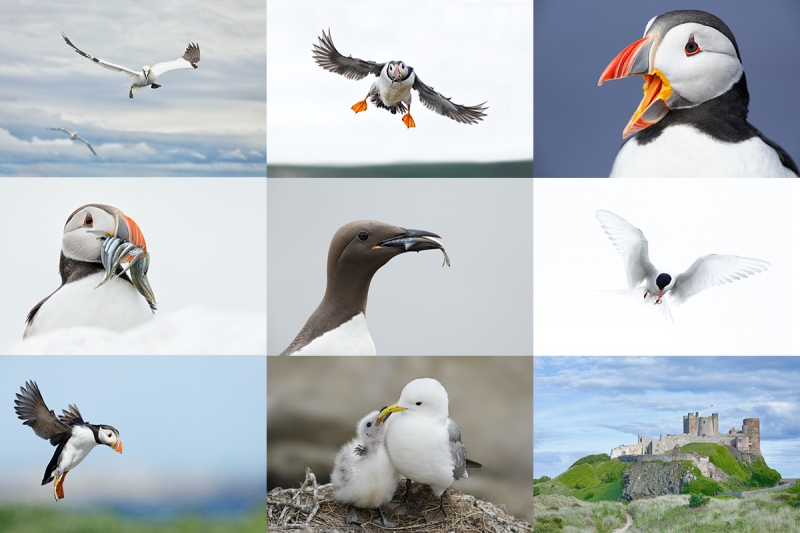













Everyone is correct that the underwing detail in Image #2 is far better. Some are touching on the reason why — both are right down sun angle … What is it that is causing the underwing shadows in Image #1?
a
Artie, it’s the sun angle on #1. The sun is towards the right, not behind you, and the curve of the front edge of the wing is blocking the light causing the shadow.
Artie: It’s the angle of the wings. You might have been right down sun angle, but the wings in image 1 aren’t aligned toward the sun as they are in image 2.
Artie, in your opinion does the Flexshooter replace a gimbal, for, day a 500mm f4?
Only 100% of the time. I am now using only the FlexShooter Pro as a tripod head …
with love, artie
Great captures Guru, though the last extreme crop lost little clarity but, that’s completely normal.
One question: Do you find significant differences in IQ between D5 and D850 as the difference in resolution is huge whereas sensor size is same?
Thank you in advance.
Quazi
To my eye he huge crop looks pretty darned good. More pixels is always better …
a
Image 2 with nice direct sun as shown from the shadow cast from the birds head. Great picture. We can all learn with your help about autofocus and sharpness. Thanks.
Artie: Great images. I find the underwing detail in image 2 more pleasing. I like the more-direct light and that the entirety of the wings is lit. The fish looks a lot like a pumpkinseed sunfish, but that is generally found farther north. I agree with redear sunfish.
I think the fish is a shell cracker.
The second image underwing detail is better due to better lighting, slower motion as the bird is perched and the wings are more near parallel to the sensor and just slightly distant to the active focus point on the bird’s right eye.
Thanks for the lead. I did some surfing, and from what I can tell you are correct. This fish is a Red-eared Sunfish, aka “shell cracker.” It is a very close relative to Bluegill.
with love, artie
Hi Artie, I agree with Elinor that there’s better underwing detail in image #2. I think the direct soft light made the biggest difference on this, illuminating the underside and maintaining lots of detail in the white and dark feathers.
Jake
Hi Art, it is my understanding that Group is strongly biased to focus on the nearest object, which is just what is usually wanted for BIF to avoid jumping to the background, and that Dynamic is not biased this way. Might this have any bearing on what you are finding?
Thanks John,
If what you say about Group is 100% true then I have a zillion flight images that should not be sharp but are. That said I am not sure how in the heck it works so well for flight.
with love, artiie
Underwing #2 looks to me to have better detail because it is more evenly lit. #1 has shadow under the wing down almost to the base and its wings were probably moving faster. Also the feathers are more closed on #1 so feather edges are not showing as much. But I may be way off.
Or you might be right on ….
a